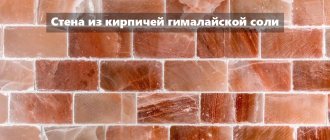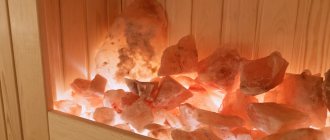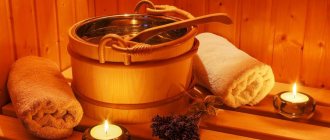Several centuries ago, the inhabitants of Rus' believed that the bathhouse could cure all diseases. It is enough to plunge headlong into the warm steam - and everything will pass. Now many villagers and summer residents are not averse to taking a steam bath with a broom on the weekend to wash away all the toxins and stress. In the city, it is fashionable to visit the sauna for cosmetic and health purposes. Is it possible to go to the bathhouse when you have ARVI? Let's figure it out. We will tell you about all the pros and cons, give useful advice, and warn against possible troubles.
When the bathhouse is prohibited
It is necessary to abandon the steam room at the height of the disease:
with increasing hyperthermia: +38°C and above;
intense headaches;
significant bronchial congestion, difficulty breathing;
copious nasal discharge mixed with pus.
Severe fever and catarrhal syndrome seriously strain the body. It is not necessary to create additional extreme conditions for him. Hot water vapor can trigger the development of pneumonia, and heat can cause dangerous complications for the heart and blood vessels. From the bathhouse in this state you can go to the hospital with a sharp jump in blood pressure, get a severe migraine or pulmonary edema. In addition, with a severe fever, the patient’s immunity does not need additional stimuli. High body temperature is an indicator of the active production of interferons.
But even if you feel well, it is prohibited to take a steam bath if, in addition to the flu, a person suffers from bronchial asthma, hypertension, cardiac arrhythmia, epilepsy, diabetes mellitus or cancer.
A gentler alternative to heat treatment for the initial stage of flu and colds, if there are contraindications for a bath, is warming your feet in hot water. This procedure is also excellent for preventing diseases.
When not to visit the bathhouse
Visiting the bathhouse has not only numerous advantages, but also some contraindications. For most people who are otherwise healthy, the biggest risks are dehydration and dizziness.
Despite all the advantages of the bath, it is advisable to consult a doctor before visiting it if you have any health problems. The main contraindications during a cold are:
- heat;
- Strong headache;
- swelling of the nasopharynx and cough;
- acute viral infections.
Bath after the flu - benefit or harm
The beneficial properties of the bath do not always improve your health and well-being, but on the contrary, they will harm you and can cause complications of the flu. So, let's highlight the important factors:
- At elevated steam temperatures, the effect increases the load on the heart, which is greatly weakened during a cold. You shouldn’t take risks, you won’t get any positive effect, but on the contrary, you will harm yourself, even to the point of death.
- In a sauna, with a lingering flu, not only its symptoms worsen, but also new ones may appear or former chronic diseases (asthma, allergies) will come back to haunt you, and even worsen in a severe form.
- Influenza is a severe disease, often accompanied by headaches. Sauna after the flu can cause dizziness.
We conclude that at the final stage of the development of the disease, it is recommended to visit the bathhouse, this will be very useful for the body, but it is worth noting that if your disease begins to give complications, fever, pain, then it is better to consult a doctor, because, as we see, can make it not only better, but also worse. It will also be beneficial for the body to visit a bathhouse in the first days after recovery.
What about medicinal rubbing, they do not cause any harm, but on the contrary, if you smear the body with rubbing (honey, salt), you can get rid of colds much faster.
You need to inhale deeply through your nose, and exhale arbitrarily and slowly, the main thing is to adhere to the rules, to do what is necessary for your health.
It is not necessary to go to the sauna only when the disease manifests itself, or after it has passed. Ideally, you should visit the sauna once a week for disease prevention and psychological pleasure. Your general well-being will improve significantly; you will begin to feel lighter, as your body will be cleansed regularly.
What does cholesterol look like?
Many people think of cholesterol as fat and believe that the fattier the food, the more cholesterol it contains. This point of view is only partly justified. Cholesterol is found in the blood and looks like a viscous substance. Cholesterol cannot be considered exclusively harmful, because it is consumed by the body in the process of producing hormones and forming cell membranes. To varying degrees, cholesterol is involved in the functioning of the immune, nervous and digestive systems, so a certain amount of cholesterol must be contained in the body at all times. Another thing is that keeping it within acceptable limits is not always easy.
Excess cholesterol
tends to deposit on the inner walls of arteries.
At first, this is an imperceptible process, but gradually, due to the cholesterol layer, the diameter of the artery narrows, and blood begins to pass through it worse. In places where the vessel narrows, a dense formation is formed from the cholesterol layer, which is commonly called a “ cholesterol plaque
.”
Cholesterol plaques not only almost completely block the flow of blood through the vessel, but also reduce its elasticity. The process of cholesterol formation is called “ atherosclerosis
”.
By themselves, single cholesterol plaques do not pose a serious health hazard, but if you do not take action, over time there will be too many of them. In addition, cholesterol plaque
- This is the initial stage of
thrombus
. Often blood clots form where atherosclerotic plaques were located. The danger of a blood clot is that it completely seals the vessels and can block the flow of blood to vital organs. If a blood clot occurs in a vessel supplying the heart, a person may have a myocardial infarction, and if blood flow stops in a vessel supplying the brain, the person may suffer a stroke.
Does high cholesterol cause death?
Cholesterol itself is not considered deadly. Complications caused by high cholesterol levels can lead to death. We have already named some of them. Atherosclerosis can trigger the development of coronary heart disease, and one of the complications can be myocardial infarction, stroke, acute thrombosis and other diseases. The list can be large and is determined by which arteries were affected.
There is a time for everything or when is it better to stay home?
The question of whether a bath is useful for colds cannot be answered unequivocally. On the one hand, yes, warming up in a steam room can significantly speed up recovery. However, only if the disease has just begun. If you go to the bathhouse as soon as you feel unwell, then it is likely that the cold will subside on the same day and the acute stage will not begin. It is useful to look into the bathhouse immediately after a cold, in the first days after recovery. This will give you energy and help restore your strength.
However, in some cases, a cold and a bath are not compatible. A visit to the bathhouse will only lead to an increase in the painful condition if:
- the disease has entered an acute stage. If viruses and bacteria have been in your body for several days, then elevated temperatures in the bathhouse will only accelerate their reproduction. The disease will begin to progress and, quite possibly, will reach complications - pneumonia, bronchitis, asthma, etc.
- you have a high temperature - from 37°C and above. Even a slight increase in temperature causes the human heart to start working at an accelerated rate. If you add to this the temperature load in the steam room, you can easily get a heart attack. Or, at best, weaken the body so much that it no longer has the strength to fight the disease.
- Acute respiratory infections are accompanied by headaches, which can intensify in the bathhouse. And this can lead to dizziness and even fainting.
- Herpes appeared on the lips. In humid and hot conditions, the herpes virus multiplies faster.
Let's summarize: visiting a bathhouse during a cold will benefit you only in the initial or final stages of an acute respiratory infection. If this sounds like you, then welcome to the bathhouse - let's start the treatment!
What happens if you immediately go to the bathhouse after an illness?
A person who has suffered an infection or inflammatory process with a high temperature should think about whether it is possible to go to the bathhouse immediately after illness. A better question to ask yourself is whether this is necessary. Doesn't the body need to replenish lost strength and return to its normal state?
There are many cases where the disease seemed to recede - the temperature dropped, other symptoms went away, and then returned with a serious complication.
You shouldn’t rush and force your body to do its best immediately after an illness; let at least a week pass after recovery - and then you can go to the bathhouse.
What happens due to the increase in temperature from steaming
- When a person is in a hot room, his body temperature rises by 1-3 degrees. Due to the fact that such a jump occurs, the body believes that an emergency situation is occurring and activates reserves.
- Such temperature fluctuations occur due to poisoning, an allergic reaction, or infection in an open wound. Therefore, the main immune response consists of an increase in white blood cells and their certain modifications.
- Phagocytosis begins in the body, special leukocytes (phagocytes) begin searching for damaged cells and enveloping them. Essentially, phagocytes absorb any abnormalities, and if the mass of such viruses or bacteria is too large for one cell, it falls apart along with pieces of pathogenic agents.
- The entry of a portion of whole phagocytes into the lymphatic system, due to which the immune system recognizes the pathogen and begins to produce specific antibodies. Thanks to this, the destruction of the pathogen is accelerated.
- Approximately the same situation occurs with a natural increase in temperature that occurs during illness. But unlike the usual course of the disease, a bath for colds and coughs has a temporary effect on the body, but the immune system continues to produce antibodies that kill viruses and bacteria for a long time.
Does a bath for a cold have a good or bad effect on the respiratory system? It was precisely because they noticed the positive effect of the bath on expectoration of mucus and softening of the mucous membrane that prompted the invention of inhalation in ancient times. This is exactly what happens when visiting a Russian bathhouse for a cold, when you can use many decoctions to form a cloud of steam.
How the respiratory system is cleansed:
- When exhaling warm fumes, the nasopharynx is first cleared, abundant mucus is released from the nose, as well as the urge to expectorate.
- When the nasopharynx is cleared, hot steam enters the trachea, which first leads to a softening of the formations enveloping its walls, and then the urge to cough occurs. Because of this, expectoration of sputum occurs.
- Thanks to the release of the nasopharynx and trachea, mucus begins to be removed from the alveoli, which interfered with proper gas exchange.
Is it possible to take a steam bath when you have a cold and use a broom tap? Most often it is advised to do this in order to get rid of aches in joints and ligaments, but in fact they don’t even occur if you go to the bathhouse on time when you have a cold. This procedure can be used to speed up blood circulation, which will increase the reaction rate of the immune system, and it will destroy all pathogenic agents in a shorter time.
Contraindications
- It is believed that in a hot environment all conditions are created for the spread of bacteria. A person who has had the flu, inhaling moist vapors, can re-acquire harmful microorganisms, which will lead to a relapse.
- In conditions of elevated temperature, weakening of the body may be accompanied by general malaise and dizziness. Loss of consciousness is also possible.
It is better to avoid visiting the steam room if, in addition to the flu, the development of third-party diseases is observed:
- Hypertension is a pathology in which there is a systematic increase in blood pressure.
- Hyperthyroidism is a disease in which the thyroid gland produces a large amount of active substances. characterized by a large production of active substances by the thyroid gland.
- Stomach ulcer - with this disease there is a risk of bleeding inside the organ.
- Skin diseases.
- Oncological diseases.
- Vegetative-vascular dystonia, which is accompanied by frequent fainting, especially in stuffy rooms.
How to increase the benefits of a bath
Procedures according to the rules will help you cope with a cold faster. They should last about half an hour. In order not to overload the body, it is useful to do not one, but several passes:
for the first time - sit in the steam room for a few minutes and go out to rest;
again - steam, preferably with a broom, for 10 minutes, then rest again in the dressing room;
the third time you are allowed to steam for 10 to 15 minutes.
Experienced sauna lovers can stay there longer. For those visiting the steam room for the first time, a more gentle regime is recommended. You should leave it at the slightest disturbance in your well-being; it is undesirable to climb onto the top shelves and let on steam too often.
Inhalations with essential oils of citrus, fir, pine, juniper, eucalyptus or peppermint will help in the fight against the virus. It is recommended to steam with a broom made of coniferous trees or oak branches. These plants have antimicrobial and anti-inflammatory effects.
Immediately after the procedures, without leaving the dressing room, it is useful to drink medicinal tea. For influenza, diaphoretic drinks with mucolytic and anti-inflammatory effects are suitable:
raspberry leaves and berries.
When using bath procedures during colds and flu, you need to abandon the idea of extreme hardening. When leaving the steam room, you should not douse yourself with cold water, jump into an ice hole, or wipe yourself with snow. This may result in a further increase in fever.
Remedy No. 3. Aromatherapy
Let us remind you that by inhaling hot, moist steam, a person receives the effect of inhalation. At the same time, the airways are moistened, and mucus is liquefied and removed. This happens with any deep inhalation, but when moist vapors are enriched with essential aromas, the effect will be several times higher.
To combat colds, the aromas of pine, fir, eucalyptus, juniper, geranium, and lavender are traditionally used. The solution for inhalation is prepared as follows: 10-20 drops of essential oil of one of the above plants are diluted in 1 liter of water. Most often, heater stones are watered with this solution instead of ordinary water. However, this option is not ideal, since the oil on the stones often begins to burn, giving off a very unpleasant burning odor. Without the risk of getting something similar, you can water the walls of the steam room with the resulting composition or evaporate the aroma of essential oil in an aromatic evaporator.
The article will tell you more about the use of essential oils in the bath.
Herbal infusions for the runny nose for the steam room
Colds and rhinitis will go away much faster if thermal procedures in the bath are combined with taking special herbal decoctions.
You can prepare such infusions yourself or buy them at a pharmacy. The following herbs are mainly used for bath inhalations:
To prepare a healing mixture, add 15-20 drops of oil to 1 liter of water.
To get rid of a runny nose, you can prepare the following infusion:
- Take a teaspoon of dry mustard and pour a glass of boiled water over it.
- Splash this liquid onto the hot stove stones.
- Inhale healing steam.
You can use a cracker of rye or wheat bread, which is placed on hot stones. This will also give off a pleasant smell.
Ledum infusion also effectively treats rhinitis. To do this, take 100 g of crushed dry grass and add 1 tablespoon of olive or sunflower oil. The mixture should be infused for a month in a dark place, shaking constantly. To quickly prepare the medicine, this mixture is heated in the oven.
Then the infusion should be strained and diluted in 3 liters of water. The prepared liquid is gradually poured onto the stones during sauna inhalations.
The same infusion can be dripped into the nose, 2-3 drops in each nostril.
If a runny nose is accompanied by a cough, then there is an excellent recipe that relieves illness in the upper and lower respiratory tract. We are talking about an infusion of elecampane, marshmallow and licorice.
https://www.youtube.com/watch?v=FgHhfYfO-B0 To do this, take a teaspoon of crushed dry roots of each of these herbs and pour boiling water over the mixture. Water is taken in an amount of 400 ml. The infusion should sit for at least a day. Then you should strain it and dilute it with 2 liters of water.
The prepared mixture is poured over the hot stones. In order for the healing effect of herbs to be not only from the outside, but also from the inside, you should take this healing infusion orally.
Healing teas bring greater effect in the bath. To get rid of a runny nose, you can prepare the following decoction:
- Take 5 g of dry leaves of coltsfoot, raspberry, meadowsweet, linden blossom.
- The dry mixture is poured with boiling water in a ratio of 1:40. This means that 40 g of water is taken per 1 g of mixture.
- The infusion is kept in a dark place for 1 tea.
- The herbal tea is cooled, filtered and drunk.
The bath is an excellent remedy in the fight against runny nose and colds. If there are no contraindications or fever, go to the bathhouse.
(Visited 32 times, 1 visits today)
Features of treating colds in a bath
Now, let's try to figure out whether a bath is useful for children with a runny nose. If a child over 3 years of age begins to show symptoms of acute respiratory infections, it is not at all necessary to take him to a steam room to warm up. If the age of the little resident is less than three years, then you should forget about the sauna altogether.
The benefits of visiting a bathhouse for adult patients will be obtained only at the beginning of the disease, when a slight malaise is felt and a runny nose only appears. Timely warming of the body will prevent the development of the acute stage of the disease. The cold will go away quickly. During the recovery stage, it is also useful to visit the bathhouse.
Bath treatment
Visiting a bathhouse is often used not only for its intended purpose, for washing, but also as a method of therapy, since it allows you to warm up the body, enhance metabolic processes, and get rid of toxins. Bathing in a room filled with hot steam leads to increased blood circulation and increased activity of the secretion of sweat and sebaceous glands. Many people o. Without a doubt, thermal procedures in a steam room have many advantages. A bath for a runny nose can help:
- facilitate nasal breathing;
- fight the inflammatory process;
- stimulate the body's immune response.
To achieve the best therapeutic effect, inhalation of extracts of various medicinal plants with hot steam is used. When planning a visit to the steam room, you can infuse steam water using mint and juniper. Essential oils (mint, eucalyptus, lemon, etc.) are also useful. Inhalation of saturated steam is a type of inhalation, which is widely used as a therapeutic procedure for diseases of the upper respiratory tract.
Bath after the flu - benefit or harm
The beneficial properties of the bath do not always improve your health and well-being, but on the contrary, they will harm you and can cause complications of the flu. So, let's highlight the important factors:
- At elevated steam temperatures, the effect increases the load on the heart, which is greatly weakened during a cold. You shouldn’t take risks, you won’t get any positive effect, but on the contrary, you will harm yourself, even to the point of death.
- In a sauna, with a lingering flu, not only its symptoms worsen, but also new ones may appear or former chronic diseases (asthma, allergies) will come back to haunt you, and even worsen in a severe form.
- Influenza is a severe disease, often accompanied by headaches. Sauna after the flu can cause dizziness.
We conclude that at the final stage of the development of the disease, it is recommended to visit the bathhouse, this will be very useful for the body, but it is worth noting that if your disease begins to give complications, fever, pain, then it is better to consult a doctor, because, as we see, can make it not only better, but also worse. It will also be beneficial for the body to visit a bathhouse in the first days after recovery.
You need to inhale deeply through your nose, and exhale arbitrarily and slowly, the main thing is to adhere to the rules, to do what is necessary for your health.
It is not necessary to go to the sauna only when the disease manifests itself, or after it has passed. Ideally, you should visit the sauna once a week for disease prevention and psychological pleasure. Your general well-being will improve significantly; you will begin to feel lighter, as your body will be cleansed regularly.
Arguments for and against baths during the flu
How many people, so many opinions. Visiting a bathhouse evokes a dual attitude: there are arguments for and against. You should consider all the advantages and disadvantages of a bath during the flu.
The advantages of the bath are:
- The bath helps remove mucus and cleanse the bronchi and lungs if essential oils are used.
- The bath promotes accelerated sweating.
- A bath broom has a beneficial effect on pain in joints and blood vessels, speeds up blood flow and quickly removes toxins.
The disadvantages are those contraindications that exist when visiting a bathhouse. If they are not taken into account, the patient’s well-being will worsen:
- When there is a high temperature.
- If you have flu headaches, which can get worse and lead to fainting.
- If you have a long and persistent flu. In this case, heat and steam will contribute to the rapid proliferation of microbes, which will lead to increased symptoms and the occurrence of diseases: a chronic form of the disease, bronchitis, allergies, asthma or pneumonia.
- In the presence of herpetic rashes. Steam and high temperatures can cause large skin rashes.
It is better to engage in bath procedures in the early stages of the disease or already at the stage of recovery. In the midst of flu, colds and other illnesses, it is recommended to avoid bathing so as not to worsen your health.
Indications for visiting the bathhouse and is it possible to wash if you have a cold without fever?
To accurately understand whether a bathhouse helps with colds, you need to know certain rules of behavior in this establishment. It is not recommended to visit the steam room alone, as if the body reacts too strongly, clouding of consciousness may occur.
Is it possible to go to the bathhouse if you have a cold without fever? It is possible, but subject to certain rules:
- If there is a large amount of steam in the steam room, you should avoid places where only the temperature is increased.
- No wounds on the body.
- No other inflammatory infections.
- No contraindications for health reasons.
- The presence of knowledge about the correct steaming technology, which is present in the patient or his accompanying person.
If all these points are met, then you can take a steam bath if you have a cold. This procedure will only bring correct and useful results. At the same time, it will have a negative effect on colds, but will also help strengthen the body and immune system.
Infusions and inhalations
The best preventive effect on the bronchi and lungs is provided by inhalation procedures. They allow you to get rid of a lingering cough and clear snot from the nasal cavities.
To protect the body from re-infections after suffering from the flu, you can use lavender, eucalyptus, fir, juniper or orange oil. To get the effect, you need to drop 2-3 drops of oil onto the hot stones in the steam room.
You can replenish the fluid lost in the bath as a result of excessive sweating with medicinal teas. To prepare them, you can use chamomile inflorescences, linden blossom, thyme, lemon balm, and mint. You can add honey, wild berries or lemon to the drink. By drinking the prepared drink, you can speed up the healing process and restore vitality.
When going to the bathhouse after the flu, you need to carry out inhalation procedures and massage your body with a medicinal broom. You can also rub between visits to the steam room, but it should only be done on steamed skin. In this case, the risk of skin damage is minimal.
When vaping, products that enhance sweating are used. A particularly popular mixture is honey and table salt. The ingredients are used in equal proportions. Table salt can be replaced with sea salt if necessary. Intense rubbing with the use of this remedy has a strong healing effect on the body, relieving a person of a debilitating cough and severe nasal congestion.
Remedy No. 2. Therapeutic rubbing
The better you warm up and sweat in the steam room, the faster you will be able to say goodbye to the disease. To enhance sweating, therapeutic rubbing with special “sweat-dispersing” agents, which include honey and salt, is especially effective.
You can do this: mix honey with salt (fine table salt or crushed sea salt) in a 1:1 ratio and rub this mixture on the heated skin directly in the steam room. If you have a runny nose or cough, this procedure will work better than any medicine!
Effective bath procedures for colds
What bath procedures are most effective and useful for the prevention and treatment of colds?
Massage with a bath broom
Massage with a broom is the simplest and most approved way to improve your health in a bathhouse for ARVI and flu. The procedure helps improve blood circulation, accelerate metabolism, and remove waste and toxins.
To maximize the benefits of using a bath broom, it is important to choose the right tool. It is recommended to give preference to brooms made of linden, birch, eucalyptus and pine needles (juniper, spruce, pine or fir)
A broom made from linden leaves removes mucus from the bronchi and relieves muscle fatigue.
A eucalyptus broom relieves coughs, runny nose and sore throat.
A pine broom effectively disinfects the air, improves sweating, and helps normalize blood pressure.
Rubbing
Good warming up in the steam room helps improve the beneficial effects of bath procedures and speedy recovery.
To enhance sweating, therapeutic rubbing is prescribed using special diaphoretics: a honey-salt mixture in equal proportions and ready-made warming essential oils, which can be purchased at the pharmacy. The prepared mixtures are evenly applied to the heated body with soft circular movements.
This procedure is useful if the patient has a severe cough or runny nose.
Inhalations
Heated and humid air helps to effectively cleanse the bronchi and lungs, as well as relieve coughs and runny noses. For this reason, a bath for coughs with inhalation procedures is recommended.
Inhalations using natural essential oils are especially effective in the fight against viral and bacterial infections. They moisturize the airways, remove mucus, and eliminate pain.
To combat colds, essential oils of lavender, eucalyptus, tea tree, fir, juniper, geranium, and orange are used. Preparing a medicinal solution for inhalation is quite simple: pour 1 liter of water into a container and add 12–18 drops of oil.
Often, the prepared solution is used to water stoves instead of ordinary water, and is also added to an automatic evaporator.
Heated essential oils greatly enhance the healing effect.
Medicinal drinks
When visiting a steam room in conditions of high humidity, a person loses a lot of fluid.
To replenish fluid and enhance the diaphoretic effect, it is recommended to take special herbal teas. Such drinks are prepared based on natural ingredients - chamomile, linden, thyme, lemon balm and mint. You can also add honey, fresh or dried wild berries and lemon to drinks.
Therapeutic drinks are designed to enhance the healing effect of bathing procedures, get rid of colds and quickly restore vitality.
Herbal teas can be taken in short breaks between visits to the steam room.
If the body is weakened, it is worth reducing the duration of bath procedures, while it is important to take short breaks for rest and recuperation. So, is it possible to go to the bathhouse if you have a cold? Of course, it is possible if you follow the doctor’s recommendations and do not neglect existing contraindications.
So, is it possible to go to the bathhouse if you have a cold? Of course, it is possible if you follow the doctor’s recommendations and do not neglect existing contraindications.
An effective combination of existing bath procedures allows you to quickly eliminate the first signs of a cold and restore strength after full recovery.
If you have chronic diseases, before visiting the bathhouse, it is recommended to obtain medical advice to avoid unpleasant consequences.
Remedy No. 1. Massage with a broom
When treating a cold in a Russian bath, you should definitely take a steam bath with a broom. This will increase blood circulation in the capillaries, activate sweating, speed up metabolism, and help flush out impurities and toxins from the pores. Moreover, it is important to choose the “right” broom:
- Linden broom – accelerates sweating, calms the nervous system.
- Birch broom – promotes the removal of mucus from the bronchi, eliminates pain in muscles and joints.
- Coniferous broom (juniper, fir, spruce) - stimulates sweating and disinfects the air in the steam room.
- Eucalyptus broom – cleanses the air of pathogens, eliminates cough, runny nose, and sore throat. It is especially useful to “breathe” with a eucalyptus broom. To do this, you need to steam a dry broom, and then press it to your face and breathe in the emanating ethereal vapors. Everything will take about 5 minutes, and you will feel relief from the painful condition immediately.
If you are interested in learning about the most painful bath brooms, we recommend reading the article
When and how to shower when you have a cold
Water treatments and colds
Many people remember from childhood that mothers forbade washing during illness. No matter how long it lasted, you could only hover your feet, but not wash. Doctors consider such restrictions to be unreasonable.
When we have a cold, we sweat a lot, drink raspberry tea and other diaphoretics. Sweat clogs pores. It becomes more difficult for the body to eliminate toxins. Therefore, it is necessary to wash to cleanse the pores, but you need to do it correctly.
How to shower properly when you have a cold:
The water temperature should not be very high, preferably not higher than body temperature. This will avoid unnecessary overheating and increased heat. You can take a shower and bath. We usually don’t stand under the shower for long, but we can lie in the bath as long as we like. But during illness it is not recommended to do this. Excessive humidity is harmful, it increases the formation of sputum, which can lead to a strong cough or increased flow of mucus from the nose. It is possible and even beneficial to take a shower when it is hot. Doctors think so. A warm shower will help reduce the fever, relieve the condition and lower the temperature. However, it is advisable that it is a shower and in no case hot
After a shower, it is important to avoid hypothermia. You need to dry yourself thoroughly with a towel and put on warm socks and a robe. When you're going to take a shower, don't forget your shower cap.
Washing your hair when you have a cold is not as beneficial as washing your body. Hair takes a long time to dry, which leads to hypothermia, you can get caught in a draft and catch an even worse cold. If you wash your hair, immediately wrap it in a towel and then dry it with a hairdryer. It is better to take a shower or bath not in the morning, but at night, so that after water procedures you can immediately put on warm socks and lie down under the blanket. You can add herbs to the bath, for example, chamomile, St. John's wort. This is not only good for the skin, but will also serve as an inhalation to cleanse the lungs of phlegm.
Contraindications and common mistakes
Swimming during a cold can be harmful if you do not follow the rules or there are certain contraindications:
- For example, people with heart and vascular diseases should not take hot baths at all, and especially if they have a weakened immune system or a cold.
- People with varicose veins, heart failure, high blood pressure, and cerebral circulatory disorders should not take baths. However, showering is still not contraindicated. If you rinse quickly and not with hot water, there will be no harm.
- It is worth remembering that any bath is a strain on the heart. Hot water increases pressure and increases the load on blood vessels. If your heart is already weak, replace the bath with a shower. It is useful during colds. If you choose a bath, do not lie in it for more than 20 minutes.
- Bath and alcohol should not be mixed. We often hear advice such as “you need to warm up with vodka, and then immediately steam your feet.” This is completely false. It’s one thing to take a shower before bed, and another thing to take a thermal bath after drinking strong drinks. Alcohol does not cure diseases; it weakens the body and immunity. Sometimes they drink mulled wine to warm up, but this does not apply to viral diseases in full swing. Moreover, it is not recommended to take baths or steam your feet after drinking alcohol. This can lead to sudden changes in pressure.
- You should not take hot baths if you have diabetes. They can cause low blood sugar levels. However, showering is also not contraindicated.
- There is no need to get carried away with taking a bath during pregnancy. If a pregnant woman has a cold, you can take a warm shower or a warm bath for no more than 5-10 minutes with the doctor's permission. Steaming your feet and taking hot baths is strictly prohibited. They can cause a miscarriage.
How to steam properly?
Having brewed the chosen broom with hot water, as soon as it has steamed, you can begin to steam the patient. To make the procedure easier to endure, you need to put a special cap on your head. If the patient is steaming himself, then also cover his hands with protective caps.
Soaring a person with a broom is a whole science:
- The process begins with light slapping, one might say stroking, starting from the feet to the head area.
- They come back, lightly slapping the sides.
- Returning upward, attention is paid to the lumbar region, hips, and buttocks. When treating these areas with a broom, you can not only pat, but also rub in a circular motion, applying maximum effort.
- Take the broom with your hands from both ends, press it to the lumbar region and, applying light pressure, smoothly pull it up to the back, right up to the neck. Repeat up to six times.
- Afterwards, the back area is well steamed, making sharper movements, while adding a parka at the same time.
If it is difficult for a patient to be in the steam room, and he complains that he “doesn’t like” such therapy, then the process must be stopped immediately so as not to harm his health.
If the patient becomes ill , he needs to be taken out of the steam room to a cooler place, allowed to catch his breath, and wash his face with cool water. You will have to monitor your general condition for some time, and if things get worse, call an ambulance.
Bath and rheumatism
For those suffering from rheumatism, a bath is recommended (and still recommended!), but very, very carefully. Ideal for combating this disease. And not electric, but wood-burning - the one that needs to be heated for several hours
Do you need
. And not an electric one, but a wood-burning one - one that needs to be heated for several hours. Do you need
, achieved through thermal radiation of stones. A cool sauna (70°C) will allow you to stay in it for about 10 minutes, and the heat will reach problem areas. But here's what you need
, is to dive into an ice hole or a cool pool, swim in the snow or even douse yourself with cold water. The maximum that is allowed is a lukewarm shower, just below body temperature.
Prevention of disease in the bathhouse
Doctors approve of visiting the steam room as a coronavirus prevention, since the procedures are of great benefit:
- Strengthen the immune system.
- Cleanse the body of waste and toxins.
- Activate metabolic processes.
- Clears the upper respiratory tract of mucus.
- Strengthens lymph circulation and blood flow. Protective cells are quickly transferred to emerging lesions.
- Cleanse the body. It removes toxins that interfere with the body’s speedy recovery.
For prevention to have maximum effect, you need to:
- Before and during visiting the steam room, avoid drinking alcoholic beverages.
- Do not visit the bathhouse if you feel unwell.
- Go only to a heated steam room.
- On your first visit, stay in the steam room for 5 minutes. Gradually, the time spent inside increases to 15–20 minutes.
- Drink a lot of clean water or herbal teas while in the bath so that the body does not become dehydrated.
If the condition worsens while visiting the bathhouse or after it, you need to try to bring the person to his senses yourself. If the condition continues to worsen, you should consult a doctor.
You cannot visit the bathhouse if you have a coronavirus infection. If your health is normal, bath procedures will be an excellent prevention of this disease.
Tips and tricks
To ensure that going to the steam room is as safe as possible and does not aggravate your well-being, you should follow several rules when you have a cold:
- When visiting the steam room, you should not get your hair wet. It is advisable to wear a felt cap, which will protect your head from overheating.
- You should not immediately sit on the highest shelf upon arriving at the bathhouse - the body must be slowly prepared for the rise in temperature.
- The time spent in the steam room should be limited. After the end of the event, you need to rest in the dressing room until your body cools down.
- In between runs in the steam room, it is necessary to compensate for the supply of lost fluid. For these purposes, herbal tea with raspberries or currants is ideal.
Bath for a runny nose
It’s easy to catch a runny nose in our climate: your feet get wet, there’s a draft… and then you can’t breathe. If you have such a problem, you need to visit the steam room. A runny nose can be treated perfectly in a bathhouse, especially if you give it the right fragrant medicinal steam. This results in inhalation for every cell of the body, while the nasopharynx warms up perfectly.
It is best to use the following herbs to treat a runny nose in a steam room: eucalyptus, juniper, thyme, chamomile, mint, conifers (pine, spruce, cedar, etc.).
Contraindications
Sometimes vaping can cause harm:
- It is believed that in a hot environment all conditions are created for the spread of bacteria. A person who has had the flu, inhaling moist vapors, can re-acquire harmful microorganisms, which will lead to a relapse.
- In conditions of elevated temperature, weakening of the body may be accompanied by general malaise and dizziness. Loss of consciousness is also possible.
It is better to avoid visiting the steam room if, in addition to the flu, the development of third-party diseases is observed:
- Hypertension is a pathology in which there is a systematic increase in blood pressure.
- Hyperthyroidism is a disease in which the thyroid gland produces a large amount of active substances. characterized by a large production of active substances by the thyroid gland.
- Stomach ulcer - with this disease there is a risk of bleeding inside the organ.
- Skin diseases.
- Oncological diseases.
- Vegetative-vascular dystonia, which is accompanied by frequent fainting, especially in stuffy rooms.











